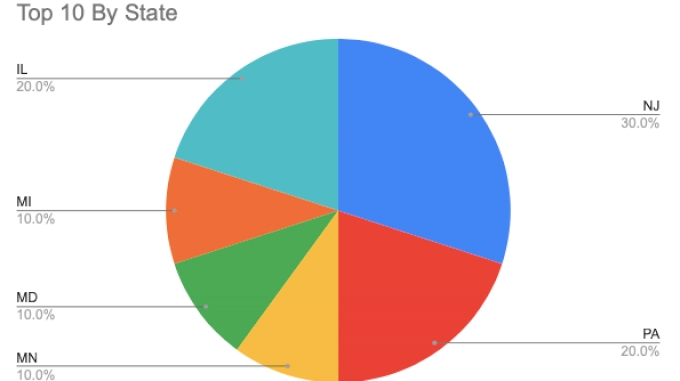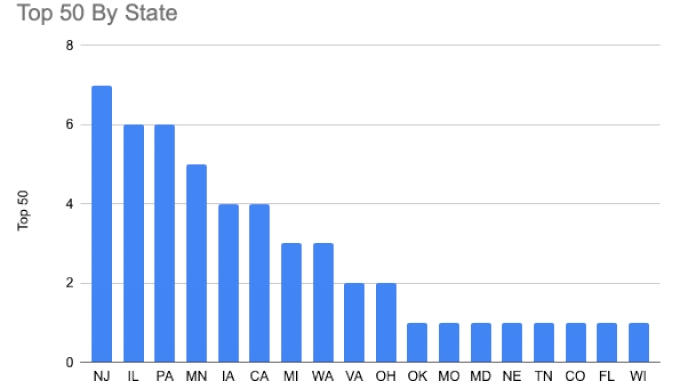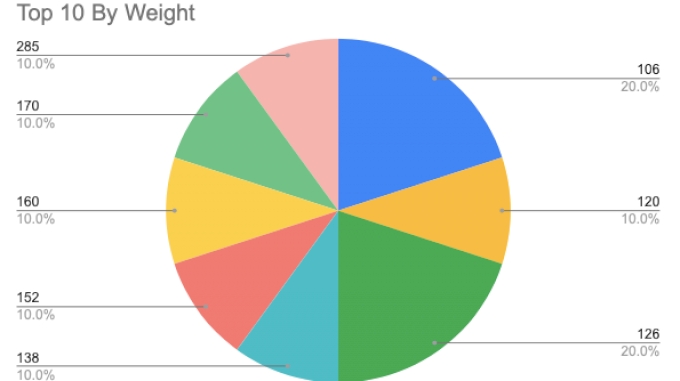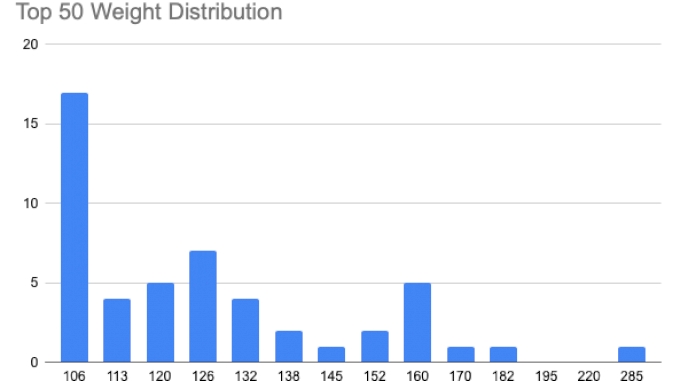Breaking Down The Freshman Big Board
Breaking Down The Freshman Big Board
Breaking down the best freshmen in the country by state and weight class.

Unlock this article, live events, and more with a subscription!
Already a subscriber? Log In
Freshmen can find the transition to high school to be drastically different depending on size and maturity. The obvious assumption is that the volume of freshmen in the 106lb weight class is going to make it the dominant weight class on the Freshman Big Board. You also would be correct to assume that the composition of the weight also leads to the weight being home to the most freshmen cracking the top 20 in the weight class rankings.
However, those rankings don’t always carry the most weight when comparing the freshmen to their peers in other weight classes. This class has some interesting outliers when you evaluate the entire board. Let's take a look.
Preps Bolster Power States
New Jersey and Pennsylvania are always well represented in the rankings with strong wrestling bases. When the accounting methods for state attribution places National Prep wrestlers in the state of their chosen institution, Pennsylvania and New Jersey have quite an advantage. The very top of the freshman board shows that power programs like Blair Academy and Wyoming Seminary can swing the tally quite a bit. New Jersey has two freshmen in the top 10 from out of state, and Pennsylvania has one. With different accounting practices, the composition of the top 10 looks much different with #1 Marc-Anthony McGowan (NJ) originally being from Florida, #2 Gabe Arnold (PA) hailing from Georgia, and #3 Cody Chittum (NJ) learning the sport in Tennessee.

The Freshman Big Board only goes 50 deep. The board expands to 100 as they move to sophomores, and the sample size gives fans a better picture of talent distribution. Power states dominate the top 50 freshmen with New Jersey, Illinois, Pennsylvania, Minnesota, Iowa, and California rounding out the top five (Iowa and California each have four in the top 50 and are tied for fifth). Ohio only had two representatives on the board, but you have to account for the Ohio state tournament being canceled in March. Several guys wrestled their way into the top 50 with breakout performances at their state tournament. You have to believe a few in Ohio would have shown their progress from the season and proved their worthiness with a strong finish at the state tournament.

Top End Talent Comes In All Sizes
Eight different weight classes are represented on the Freshman Big Board with only 106lbs and 126lbs having multiple representatives. The slight outlier happens with four top 10 wrestlers at 152lbs and above. Not only does that go against the raw data of boys that size, but they are also proving themselves against a field that is composed of many more upperclassmen.

Abundance Of Talent At 160lbs
The talent on the big board leans toward the normal distribution of the overall population when you look at the entire top 50. There is an outlier in the upper weights at 160lbs. Gabe Arnold (PA), Brayden Thompson (IL), Ben Kueter (IA), Tate Naaktgeboren (IA), and Ryder Rogotzke (MN) would make for an interesting grade-level weight class. Keuter and Naaktgeboren met in the 3A finals in Iowa with Kueter coming out on top.

106lbs is represented by 17 freshmen on the big board and is aligned with the volume of competitors that you see at events like NHSCA Nationals in the freshman division. This data is a large reason I am strongly against the reallocation of the weight classes that moves the starting high school weight up a few pounds.
Related Content
 138 lbs 2nd Place Match - Gunnar Tamez, All In Wrestling vs Kaden Bunderson, JET
138 lbs 2nd Place Match - Gunnar Tamez, All In Wrestling vs Kaden Bunderson, JETApr 20, 2024
 157 lbs 5th Place Match - Logan Shaver, Fighting Squirrels vs Tytan Willden, Suples
157 lbs 5th Place Match - Logan Shaver, Fighting Squirrels vs Tytan Willden, SuplesApr 20, 2024
 157 lbs 3rd Place Match - Colten Gundersen, Brothers Of Steel vs Xander Zollinger, East Idaho Elite
157 lbs 3rd Place Match - Colten Gundersen, Brothers Of Steel vs Xander Zollinger, East Idaho EliteApr 20, 2024
 138 lbs 2nd Place Match - Jake Castagneto, Fighting Squirrels vs Shane Sherrill, Bonners Ferry Wrestling Club
138 lbs 2nd Place Match - Jake Castagneto, Fighting Squirrels vs Shane Sherrill, Bonners Ferry Wrestling ClubApr 20, 2024
 285 lbs Round 3 - Landen Pratt, Hawk Wrestling Club vs William Bomba, Bonners Ferry Wrestling Club
285 lbs Round 3 - Landen Pratt, Hawk Wrestling Club vs William Bomba, Bonners Ferry Wrestling ClubApr 20, 2024
 190 lbs Round 3 - Elijah Dilworth, JET vs Carter Cash Smith, Suples
190 lbs Round 3 - Elijah Dilworth, JET vs Carter Cash Smith, SuplesApr 20, 2024
 145 lbs Round 5 - Lochlynn Harned, Warrior Wrestling Club vs Raegan Woolley, Warrior Wrestling Club
145 lbs Round 5 - Lochlynn Harned, Warrior Wrestling Club vs Raegan Woolley, Warrior Wrestling ClubApr 20, 2024
 157 lbs 1st Place Match - Kolter Burton, JET vs Chaz Ponton, Suples
157 lbs 1st Place Match - Kolter Burton, JET vs Chaz Ponton, SuplesApr 20, 2024
 190 lbs Round 3 - Blake Nguyen, Fighting Squirrels vs Blaise Turner, East Idaho Elite
190 lbs Round 3 - Blake Nguyen, Fighting Squirrels vs Blaise Turner, East Idaho EliteApr 20, 2024